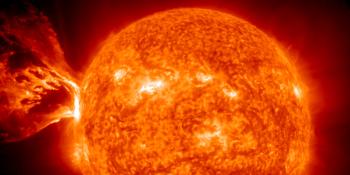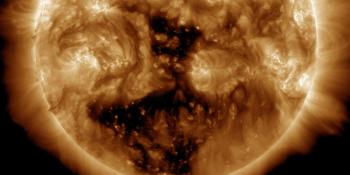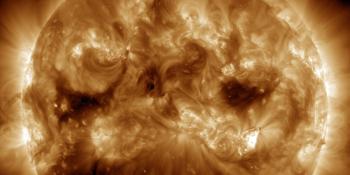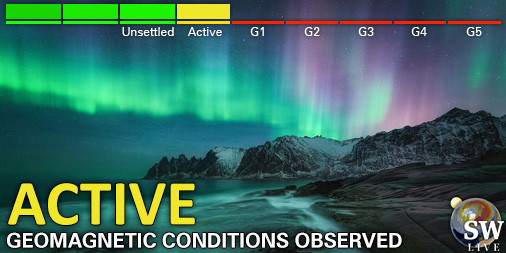Viewing archive of Tuesday, 4 November 2014
Select the desired archive item
Sunspot region 2205, active aurora
Solar activity during the past 24 hours was high. Newly numbered sunspot region 2205 is now rotating into view and it already produced four M-class solar flares during the past 48 hours. Two M-class solar flares yesterday (M2.2, M6.5) and two M-class solar flares (M2.6 and M2.3) today. A majority of these solar flares were eruptive and launched coronal mass ejections. They were however directed away from Earth as sunspot region 2205 is still close to the east limb. Aurora conditions are also elevated right now possibly due to glancing blow effects of the 1 November filament coronal mass ejection. In this article we will take a closer look at these events.
Current data suggests there is a moderate possibility for aurora to appear at the following high latitude regions in the near future
Whitehorse, YTAnchorage, AK, Fairbanks, AK
Current data suggests there is a slight possibility for aurora to appear at the following high latitude regions in the near future
Edmonton, AB, Gillam, MB, Saskatoon, SK, Yellowknife, NTJuneau, AK, Utqiagvik, AK
Latest news
Latest forum messages
Support SpaceWeatherLive.com!
A lot of people come to SpaceWeatherLive to follow the Sun's activity or if there is aurora to be seen, but with more traffic comes higher server costs. Consider a donation if you enjoy SpaceWeatherLive so we can keep the website online!

Latest alerts
04:03 UTC - Hemispheric Power Index
The OVATION model predicts the Hemispheric Power Index to reach 50GW at 04:56 UTC
01:45 UTC - Geomagnetic activity
Active geomagnetic conditions (Kp4) Threshold Reached: 01:32 UTC
Tuesday, 1 April 2025
22:51 UTC - Solar flare
Moderate M2.5 flare
22:30 UTC - Radio Blackout
Minor R1 radio blackout in progress (≥M1 - current: M1.45)
07:15 UTC - 10cm Radio Burst
Begin Time: 01/04/2025 06:45 UTC Maximum Time: 01/04/2025 06:45 UTC Duration: 1 minutes. Peak flux: 190 sfu
Space weather facts
| Last X-flare | 2025/03/28 | X1.1 |
| Last M-flare | 2025/04/01 | M2.4 |
| Last geomagnetic storm | 2025/03/27 | Kp5 (G1) |
| Spotless days | |
|---|---|
| Last spotless day | 2022/06/08 |
| Monthly mean Sunspot Number | |
|---|---|
| February 2025 | 154.6 +17.6 |
| April 2025 | 147 -7.6 |
| Last 30 days | 128.8 -21.8 |




